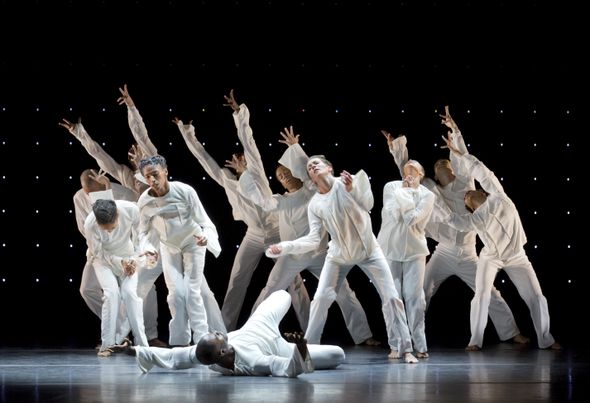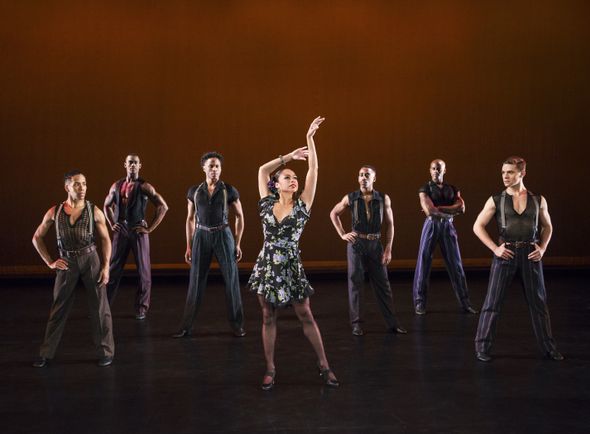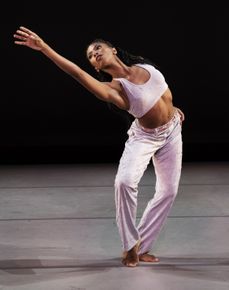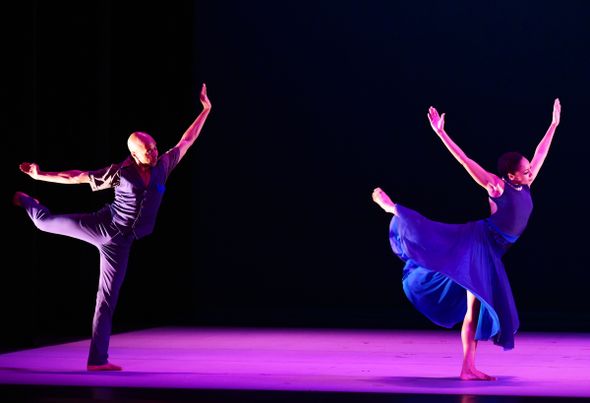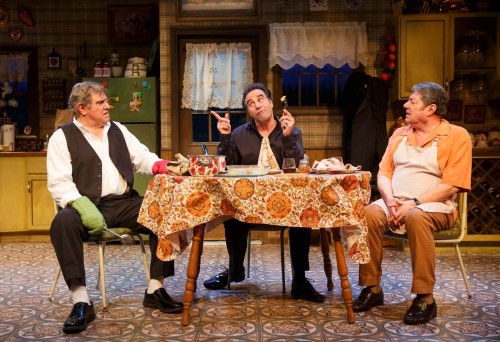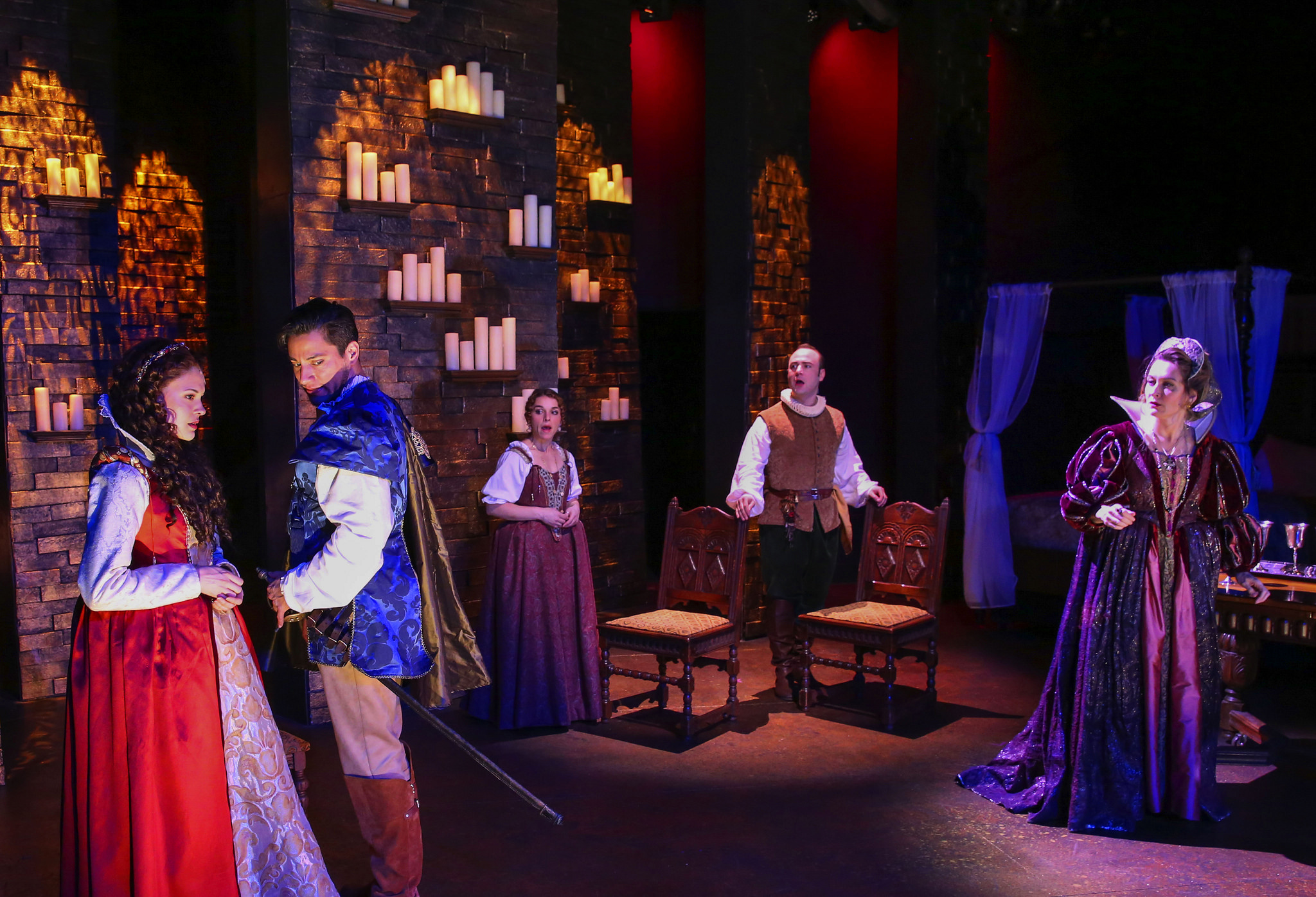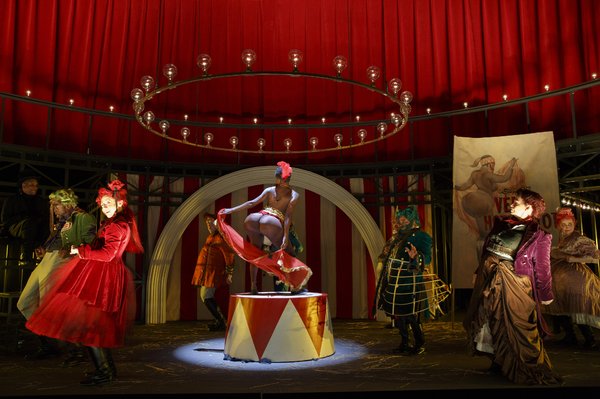A low-keyed, but fascinating look at new works in a “Revelations” -free program.
By Joel Benjamin
Seeing the Alvin Ailey American Dance Theater in a “Revelations”-free program was…a revelation. The four choreographers, including the troupe’s new artistic director, Robert Battle, put the dancers through their paces, sometimes placing them in direct comparison with other modern dance troupes as in the opening ballet, Paul Taylor’s exploration of the underbelly of the Tango, “Piazzolla Caldera.”
The Ailey dancers took to this passionate ballet with its not so subtle hints of requited and unrequited passions. Women are used and scorned or pine after men who ignore them. Men dance with men in acrobatic abandon as chandeliers mysteriously sway. The combination of Paul Taylor’s individual modern dance vocabulary with the tango movements makes for a fascinating hybrid and the Ailey cast caught the mood. They might add more weight to their upper body twists and turns, but otherwise acquitted themselves well. Jennifer Tipton’s lighting gave depth and drama to the choreography.
Robert Battle’s contribution was “Awakening” to music by John Mackey that was punctuated by annoying clangs accompanying sudden light changes. (The bright, white lighting was by Al Crawford.) Dressed in Jon Taylor’s loose white outfits that suggested chic prison uniforms or patients’ outfits, the large cast, led by Jeroboam Bozeman did a great deal of huddling, their upraised faces gazing at an unseen spot high in the proscenium. Agitated, stiff-armed turns, bent-legged runs with palms held in front of the body and marionette-like staggering made for an image of nervous people who didn’t seem to have a place to go. There only defense was to realign themselves and bunch up into the afore-mentioned huddles. There was the air of a ritual in a madhouse, but nothing conclusive as full-company circles of staggering bodies broke and scattered only to reform. In the end, poor Mr. Bozeman became a victim as all the others pounced on him. This brought to mind “The Rite of Spring” and its sacrificial victim. Although well danced, it needed more dramatic detail and less frantic running around.
“Untitled America: First Movement” by the acclaimed Kyle Abraham, was a trio for Ghrai DeVore, Chalvar Monteiro and Yannick Lebrun. The music by Laura Mvula and Steven Brown involved African-tinged folk songs. The two men were bare-chested, the lady in a two-piece outfit—costumes by Karen Young. The dance, despite the voluptuous beauty of the three performers, was more about caring than sexuality. They moved in soft steps, their bodies undulating, sometimes falling to the floor only to be cared by one or both of the others. There was a sense of community with these simple movements and floor patterns. For once, high leg extensions were an expression of awe and happiness, even though the emotional underpinnings were eerily dark. The three dancers were wonderful. Dan Scully’s lighting added color and depth.
The program ended with “Open Door” by Ronald K. Brown, another large group work, to Latin music by Luis Demetrio, Arturo O’Farrill and Tito Puente. Jacqueline Green and Yannick Lebrun were the lead couple whose free-flowing duet with it soft steps and slow twirls—raising Ms. Green’s skirt in lovely patterns—became the keynote to the rest of the dance. The ensemble performed African dance, arms jutting, hips undulating, bodies bent over and pulsating. The loose, peasant-like costumes by Keiko Voltaire gave a folksy feel to the work. As the work progressed, Latin social dances were quoted with the mambo leading the pack. The dancers did a few phrases then marched off to return again. There was a sense of not quite open competition. “Open Door” began to feel like an Ailey version of “The Dance at the Gym” from West Side Story with the exuberance of the sweat-gleaming dancers, igniting a passionate ending. The work didn’t have a strong structure, but was fun and sensuous. Al Crawford’s lighting helped distinguish the sections, artfully complementing the choreography.
The troupe is in great shape and looking very much like a company. There were no standout “stars,” just a group of passionate, hardworking dancers.
Alvin Ailey American Dance Theater (through January 3, 2016)
New York City Center 131 West 55th Street, between 6th & 7th Avenues New York, NY
For tickets call 212-581-1212 or visit www.nycitycenter.org
For information visit www.alvinailey.org
Running time: one hour, 45 minutes, including two intermissions


